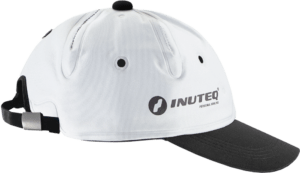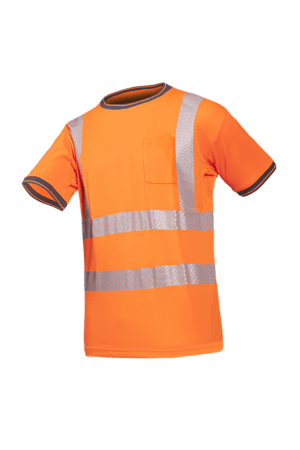Summer after summer, record temperatures have been reached in the Benelux. This trend has been confirmed by studies and measurements carried out by the KMI (Belgian Royal Meteorological Institute) in Uccle (Belgium).
“In 2020, the average annual temperature in Uccle was 12.2°C, a new record since 1833. The average annual maximum temperature also reached a new record high of 16.1°C. The winter of 2019-2020 was the third warmest since measurements began in Uccle.” - (Source: KMI).
Do you have to work in exceptionally hot conditions? First and foremost, focus on prevention and traditional precautions, such as ensuring adequate ventilation, water and sunshades.
In addition, provide your employees with cooling vests. These are vests that absorb body heat so that the body becomes cooler. Your employees will be able to work a lot more productively and with less risk of heat stress.
We have listed the five most important cooling technologies in workwear for you:
- Evaporative cooling vests
- Dry evaporative cooling vests
- Cold pack cooling vests
- Air cooling vests
- UV blocking vests
1. Wet evaporative cooling vests
How does it work?
This type of cooling vest works on the basis of immersion in water. It absorbs water like a sponge.
The wet cooling vest produces a strong cooling effect, thanks to ventilation and humidity.
Advantages
- Low cost;
- Rapid activation;
- Available in accessories such as bandanas, neckbands and fabrics.
- Significant temperature reduction (up to 15°C below ambient temperature).
Disadvantages
- Workwear will become completely wet;
- Effective for a short time;
- No temperature control;
- Dependent on ventilation and humidity.
Products
 |
2. Dry evaporative cooling vests
How does it work?
Dry evaporative cooling vests work in the same way as wet evaporative technology. The difference is that you do not immerse these vests, but they are filled with water. A membrane in the garment absorbs the water, which then provides cooling through evaporation.
The rest of the workwear remains dry.
Advantages
- Wearer and garment remain dry;
- Rapid activation;
- Significant temperature reduction (up to 15°C below ambient temperature);
- Effective for a long time;
- Can touch the skin.
Disadvantages
- Dependent on ventilation and humidity;
- No temperature control;
- Not effective when worn under other work clothes.
Products
 |
 |
3. Cold pack cooling vests - phase change
This technology makes use of a special liquid in the form of cooling packs which maintain a specific temperature for as long as possible.
The liquid crystallises and hardens at cold temperatures. The vest will continue to provide cooling for as long as the crystals are present.
To speed up the cooling process, the liquid is separated into packs. It is important to provide packs that do not differ too greatly from the ambient temperature. Otherwise, in some cases, this could cause temperature shock and/or colds.
Advantages
- Various temperature options;
- Independent of ventilation and humidity;
- Wearer and garment remain relatively dry;
- Works best under heavier protective clothing.
Disadvantages
- Cannot be worn directly against skin;
- Possible shock effect if temperature difference is too great;
- Relatively slow to activate;
- The cooling ingredients can be flammable.
Products
 |
 |
 |
4. Air cooling vests
This technology transforms the work vest into a personal air conditioning unit.
The vest contains a short tube which is connected to an air supply that blows air through the vest.
A transformer converts the incoming air into either cold or warm air.
Advantages
- Can be used in both extreme cold and heat;
- Extremely consistent and precise temperature control.
Disadvantages
- Most expensive cooling technology on the market;
- The work vest must always remain connected to the cooling tube;
- A personal air supply must be provided.
5. UV blocking
A UV blocking vest does not have an immediate cooling effect, but it does protect against harmful UV rays.
Using this technology, the manufacturer treats the garment with UV protective properties using one of two methods:
- Chemical treatment.
- A protective coating.
The recommended protection factor for extreme heat and UV contact risk is at least 50 UPF (Ultraviolet Protection Factor).
Garments certified in accordance with EN13758-2 provide UVA + UVB sun protection.
Advantages
- Easy to combine with other cooling technologies;
- Can be applied to many types of clothing and textile accessories;
- Available from low prices.
Disadvantages
- Only offers protection against UV rays, not against heat (stress).
Products
 |
 |
